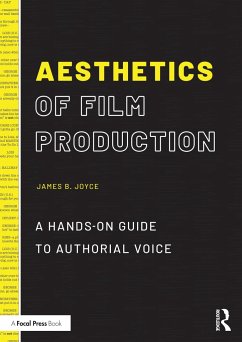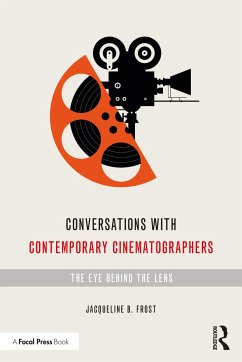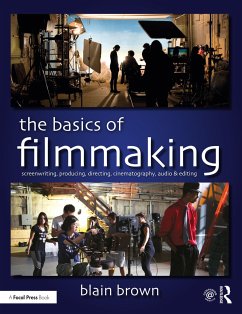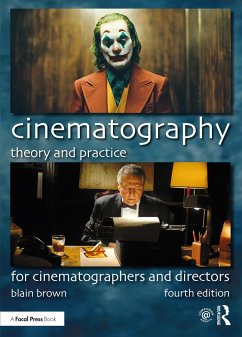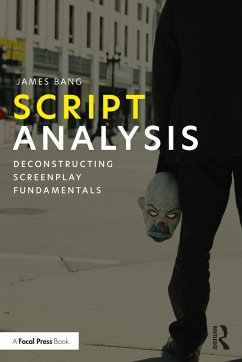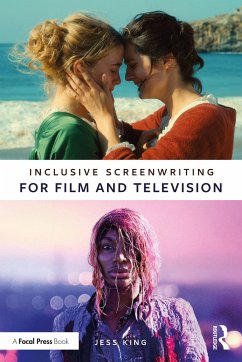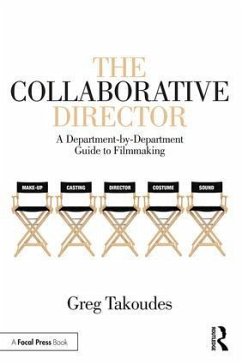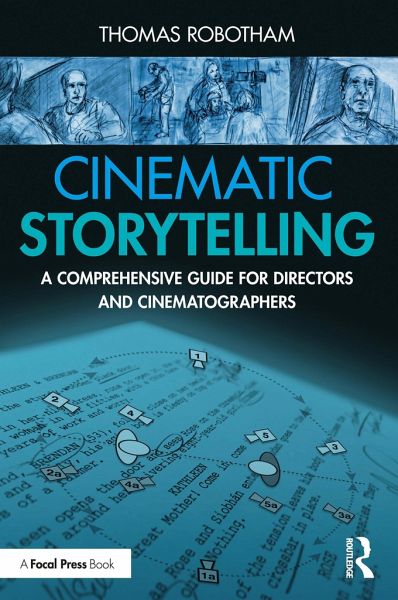
Cinematic Storytelling
A Comprehensive Guide for Directors and Cinematographers
Versandkostenfrei!
Versandfertig in 6-10 Tagen
41,99 €
inkl. MwSt.
Weitere Ausgaben:

PAYBACK Punkte
21 °P sammeln!
This book presents a new, story-based approach to cinematic coverage and storytelling in film and video. It breaks from the conventional idea that shots are the fundamental unit of filmmaking, instead exploring the specifics of determining coverage. Keyframes in patterns are introduced, delivering scripted material in a context-rich presentation that supports the storytelling.All the analysis, interpretation, and creative decision making is done first, with shots derived as the very last step. Scripted material is divided into six categories with associated patterns. Like cinematic building bl...
This book presents a new, story-based approach to cinematic coverage and storytelling in film and video. It breaks from the conventional idea that shots are the fundamental unit of filmmaking, instead exploring the specifics of determining coverage. Keyframes in patterns are introduced, delivering scripted material in a context-rich presentation that supports the storytelling.
All the analysis, interpretation, and creative decision making is done first, with shots derived as the very last step. Scripted material is divided into six categories with associated patterns. Like cinematic building blocks, these can freely stack up and interconnect, supporting creativity and avoiding rigid formulas. This approach enables filmmakers to tap into the film "language" that audiences already understand and put it to practical use, helping the audience to feel the storytelling deeply. Dozens of film examples are provided throughout, plus conceptual and camera diagrams to contextualize the methods presented, and exercises are provided to reinforce concepts. Emphasis is placed on supporting performance and story meaning through a cinematic context. With all the concepts and decision-making options described and shown in examples, a scripted scene is analyzed and developed through an eight-step process, illustrated with storyboard, camera diagrams, and ultimately shot list descriptions.
The book is ideal for filmmaking students interested in directing and cinematography, as well as aspiring and early-career filmmakers, cinematographers, and directors.
All the analysis, interpretation, and creative decision making is done first, with shots derived as the very last step. Scripted material is divided into six categories with associated patterns. Like cinematic building blocks, these can freely stack up and interconnect, supporting creativity and avoiding rigid formulas. This approach enables filmmakers to tap into the film "language" that audiences already understand and put it to practical use, helping the audience to feel the storytelling deeply. Dozens of film examples are provided throughout, plus conceptual and camera diagrams to contextualize the methods presented, and exercises are provided to reinforce concepts. Emphasis is placed on supporting performance and story meaning through a cinematic context. With all the concepts and decision-making options described and shown in examples, a scripted scene is analyzed and developed through an eight-step process, illustrated with storyboard, camera diagrams, and ultimately shot list descriptions.
The book is ideal for filmmaking students interested in directing and cinematography, as well as aspiring and early-career filmmakers, cinematographers, and directors.





